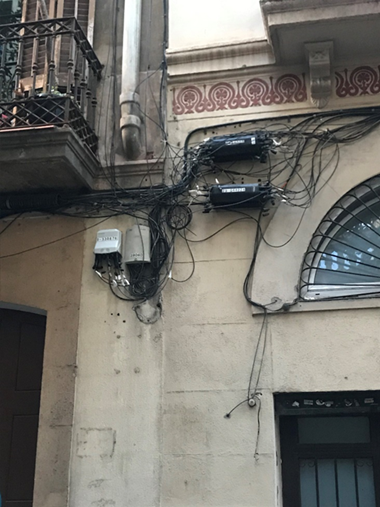
Social Movements and Moral Markets
Social movements have long exerted considerable pressure on companies, consumers, and investors so that they integrate social and environmental issues into their agendas. Beyond this, they have also played an active role in shaping and creating new markets that merge economic activity with moral values. Examples include markets supporting ethical fashion, ethical banking, recycling, organic food, and fair trade. These alternatives to mainstream markets have been termed “moral markets”.
In our study, we focus on Guifi.net, a community-led telecommunications network in Catalonia. Initially established to bridge the digital divide in rural areas, it grew into one of the world’s largest community-based telecom initiatives, encompassing a variety of both for-profit and non-profit operators, and evolved from using antennas to deploying fiber optic cables. As moral markets expand, they risk losing their original values due to cooptation by profit-driven market forces. However, the activists behind Guifi.net used a range of framing mechanisms that allowed them to adjust their communication and strategic positioning. Together, these mechanisms form a process we call “frame overlapping”, which can be instrumental in preventing the gradual dilution of moral ideals.
Sustaining Moral Integrity Amid Market Growth
A core challenge in moral markets is balancing expansion with the preservation of moral values. Traditionally, moral markets either remain small to safeguard their ethical foundations or compromise their ideals to scale up. Our study, however, identifies an alternative path where moral values can be maintained and even reinforced as the market grows. This alternative involves the use of different framing mechanisms.
Framing as a Strategy for Expansion
The activists behind Guifi.net employed three framing mechanisms to facilitate expansion without sacrificing their original mission:
- Frame Amplification: By emphasizing core values such as freedom, neutrality, openness, and collaboration, along with the principle of equal access to telecommunications, activists highlighted the moral urgency of their mission and linked it to broader social rights.
- Frame Bridging: By connecting their original ideals with economic arguments—such as job creation, local economic development, and fair competition—they engaged a wider audience, including businesses and policymakers.
- Frame Extension: By positioning their telecommunications market as an example of the “commons” and the “social and solidarity economy” movements, activists further legitimized and reinforced Guifi.net as a model of sustainable, community-driven infrastructure. Among other outcomes, this new framing led them to critique infrastructure overbuilding, evident in the overcrowding of building facades with cables from different companies (as shown in the photo).

Frame Overlapping
These three mechanisms collectively form a process we call “frame overlapping,” in which new interpretations of the market intersect with and reinforce earlier ones, without replacing or diverging from them. This process allows the original values of the market are maintained while simultaneously making the market attractive to new participants and external audiences.
The concept of frame overlapping differs from earlier understandings of frame lamination, where new frames replace old ones with fundamentally different interpretations or without significant interaction between frames. In contrast, frame overlapping, as employed by Guifi.net activists, ensures that multiple frames coexist and reinforce one another, fostering both evolution and preservation.
Main Takeaways
Our research highlights the need for activists seeking to launch alternatives to mainstream markets to be skillful in how they frame the market. To retain control over it and sustain their original vision while incorporating for-profit operators, they must embrace pluralistic and dynamic framing. Rather than being rigid, activists can remain true to their origins by being adaptable and attuned to related ideas and understandings emerging in parallel movements, which can align to their initial values. In Guifi.net’s case, these included concepts from the commons and the social and solidarity economy movements.
Moreover, our findings underscore the importance of public policies and institutions in recognizing and supporting moral markets like Guifi.net. Community-driven initiatives can help bridge the digital divide in underserved regions but require regulatory frameworks that do not disproportionately favor large telecom incumbents. Beyond telecommunications, grassroots economic models can play a significant role in delivering other essential services. These initiatives have more chances to grow if they employ different framing mechanisms to appeal to different audiences, including policymakers, while resonating with the original values of the movement.
Finally, our study contributes to the ongoing debate about the defining features of moral markets by demonstrating that, rather than adhering to predetermined goals or championing a single cause, they can exhibit a pluralistic and evolving nature.

0 Comments